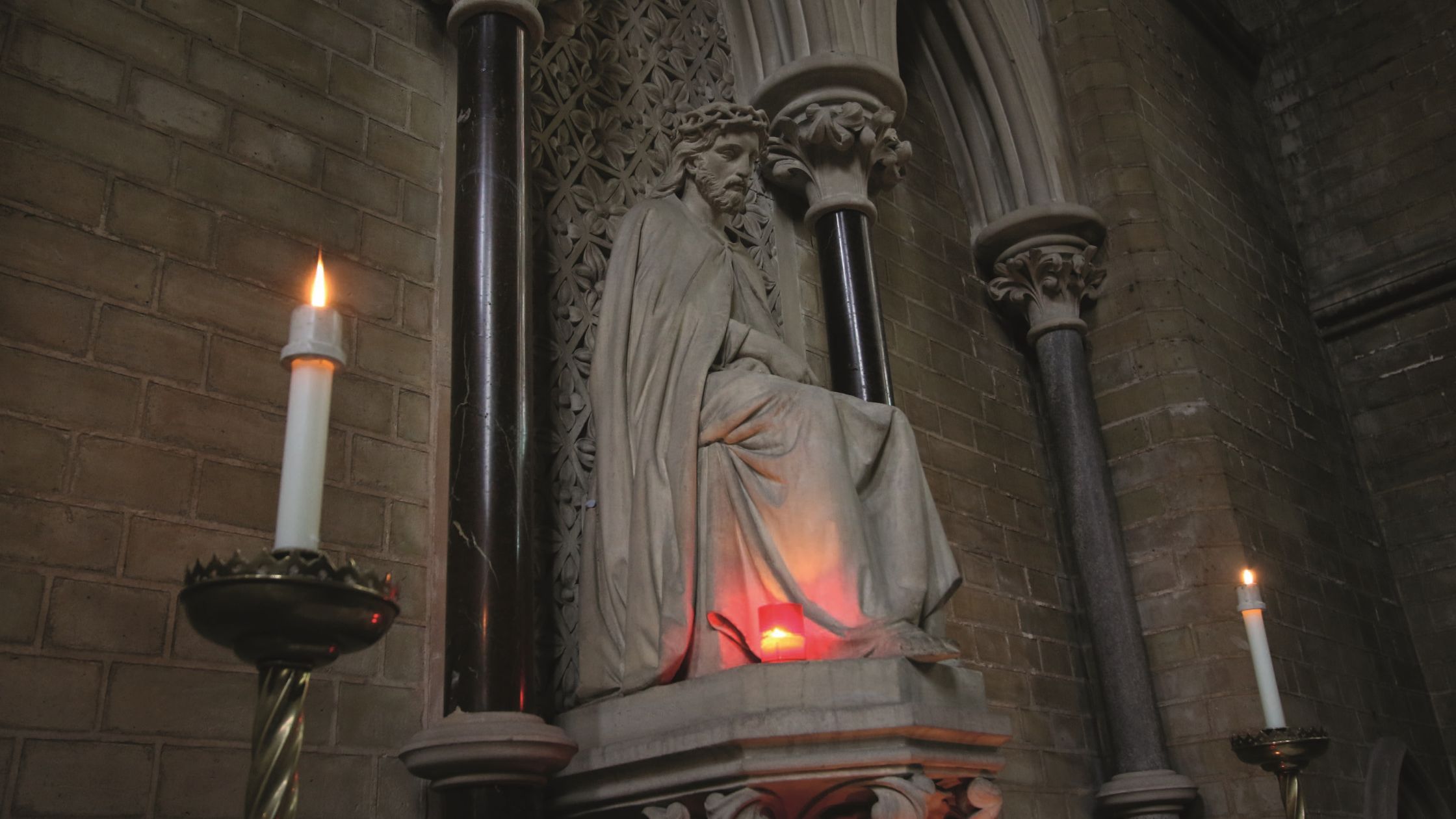“And the soldiers plaited a crown of thorns, and put it on his head, and arrayed him in a purple robe; they came up to him, saying,“Hail, King of the Jews!” and struck him with their hands.”
(3 John 19:2-3 3)
“We have no king but Caesar”, shout the crowds. (Jn 19:15) Time and again, through the moral choices we make; through the influencers and politicians and pundits we listen to; through our attraction to the powerful and wealthy of this world and our willingness to imitate their ways, we often cry out like those crowds did, and we give our obeisance to a king other than the one seated here in dignified solitude. But his is not a kingdom of this world. Rather, Christ’s kingship is declared when we seek and strive after truth and life, holiness and grace, justice, love and peace (cf the Preface for the Feast of Christ the King). Christ’s kingship transforms how we are to regard this world so that it reflects the heavenly reality of a person’s true worth and dignity. Hence, the nobles in the court of the true king will consist of those who are “hungry or thirsty or a stranger or naked or sick or in prison” (Mt 25:44). These are, as the Order of Malta calls them, “our Lords, the Sick and the Poor”. We, the servants of Christ the King, therefore, are to be found serving them through works of love that restore justice, uphold life, and proclaim the sacral dignity of the human person. To mock the refugee, to ignore the poor, and to neglect the needy, therefore, is tantamount to striking the king in the face. For in the faces of the least in our society Christ teaches us, through prayer and through his grace, to see his own “sacred head, sore wounded, defiled and put to scorn.” In the least of our brethren we might indeed behold the Man.
(Photography copyright Fr Lawrence Lew OP)
Read More Powerful Contemplations
 This reflection is extracted from our book Mysteries Made Visible: Praying the Rosary With Sacred Art. Fr Lawrence Lew’s photographs of sacred art inspire his contemplations of each Mystery of the Rosary. Beginning with a foreword by the Master of the Order, Fr Gerard Francisco Timoner III, O.P., the words and images in this book make the Mysteries we contemplate vivid and real, helping all of us – those who pray the Rosary faithfully and those who struggle with the devotion – to pray with deeper reverence and greater understanding.
This reflection is extracted from our book Mysteries Made Visible: Praying the Rosary With Sacred Art. Fr Lawrence Lew’s photographs of sacred art inspire his contemplations of each Mystery of the Rosary. Beginning with a foreword by the Master of the Order, Fr Gerard Francisco Timoner III, O.P., the words and images in this book make the Mysteries we contemplate vivid and real, helping all of us – those who pray the Rosary faithfully and those who struggle with the devotion – to pray with deeper reverence and greater understanding.
“This informative and beautifully illustrated book is a wonderful introduction to the Rosary prayer, and even more importantly, an irresistible invitation to pray it regularly.” – Bishop Robert Barron

